The Token End of Year Post 2014
2014 was a year in which the country of Japan continued to exist, and continued to invest in the production of cartoons. Some of them were made available outside Japan, and occasionally – just occasionally – I watched some of them.
The following is a collection of nonsense words about some of those cartoons I watched. Not necessarily the best ones I watched, or even necessarily good ones, but most certainly ones I watched. Also maybe some I didn’t in passing.
Speaking of things I didn’t actually watch, keeping up the usual tradition, I’ve still not got around to watching Gundam Unicorn, though I guess I’ve now got the entire series sitting around on Blu-Ray. I also didn’t get around to watching the new episode of Code Geass:Akito the Exiled, but that’s mostly a result of it not actually existing yet.
I should probably also point out that, for the first time in years, I didn’t watch either of this last years Precure movies. I guess that’s what DokiDoki will do for you, but it did rather give me a gap in terms of things to write about this year.
The “Where has All My Money Gone†Award for Wallet Emptying Merchandise – THE iDOLM@STER

Speaking of things which have continued to exist for another year, they sure continue to make iDOLM@STER products. It’s getting to be a little worrying that, when sitting down to write this out, I couldn’t really think of having made all that many iM@S expenditures this year.
Then I remember those movie tie-in CDs, and those Puchimas BDs, that movie BD set, One for All (and assorted related DLCs), that bundle of badges I got recently, that Ritsuko bag I’ve not had a chance to use, or that clock that came in the mail a couple of days ago, and it turns out that, yeah, it’s been another year of high iM@S expenditure.
I do start to worry that the lack of purchasing perception is a result of the mental commoditisation of the property in mind my – that iM@S product is becoming a utility, as it were. That being said, I think it’s more a combination of a quantitive perception, given I ignore most of the Million Live and Cinderella Girls merchandising avalanche of the last year, and increased exposure to real iM@S merchandising high-rollers. I mean, I may pay pretty close attention to AmiAmi and CDJapan on a near-daily basis, but it’s not like I’m tracking down event merchandise, let alone going to the events themselves. I’m the kind of guy who gets Saori Hayami to sign a CD, not a themed bottle of alcohol.
(Also, other cartoon idol properties I’ve blown cash on this year: Aikatsu, PriPara, WUG, Love Live, Locodol, and I guess 575 kind of counts?)
(Also Also, it’s getting to the point where it’s getting to be real difficult figuring out what the actual core iM@S fandom is actually about. Like, maybe I should actually start playing Million Live or something. Or actual watch the live shows. Both of those kind of sound financially catastrophic, though…)
(Also also also, it might be too sedate (and gay) for some folks tastes, but Locodol was a pretty swell show)
The “Box!†Award for Best New Trend Amongst Teens – Weekly Girls Nozaki-kun
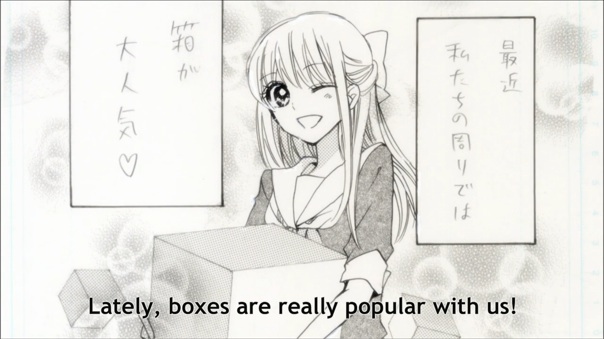
I was pretty late to Nozaki-kun, now that I think about it. Infact, distinctly remember picking it up whilst I was supposed to be packing after the last day of Otakon wrapped, over a hotel internet connection which was only slightly less over-subscribed than it was whilst the con was still ongoing. I guess the fact that I persisted with trying to watch it through less-than-ideal streaming circumstances speaks something about how entertaining a show it is.
I don’t really have a lot to say about Nozaki-kun, though – it’s amusing, doesn’t really put a foot wrong, and has a heroine who is so adorable that they made her a German ship-girl. Time, or anime-of-the-year lists, at least, aren’t always necessarily kind to such pure comedy anime, tending to favour things with sweeping dramatic moments, but Nozaki-kun probably is genuinely one of the best shows of the year.
(Also, that sequence of the cast whaling on the Tanuki in the OP sure was Ryo-timo – even I’d guessed he’d directed the OP the second that I saw that)
The “How to Buy Action Figure Man†Memorial Award for Services to Toyetic Industries – Gundam Reconguista in G
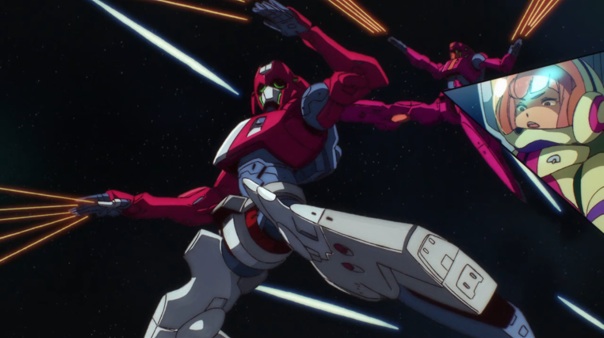
As a show, G-Reco is pretty much a hot mess. Well, for the most part, anyway – there was that really baller Wit Studio episode that Araki helmed, but for the most part, it’s a show which makes me retroactively question whether or not I really was able to follow Turn-A Gundam as it went along as well as I thought I did.
This isn’t to say that I don’t, despite all, enjoy G-Reco, but for a large part of that, it’s more that I enjoy it for it’s negative rather than positive qualities – the stilted dialogue, hilariously blunt delivery, the lack of subtlety which leads to the show loudly declaring why a situation is quite obviously, to the viewer, awkward, the bizarre non-sequitur proclamations and the massively antiquated directorial style are all things which crack me up on a weekly basis.
The one genuine positive you can level at G-Reco as actually being a positive, however, are the mechanical designs. Say what you will about Tomino’s tendency make his Gundam stories swing away from Gundam in a most incoherent fashion, that he manages to have the pull to get his hero robots to swing away from traditional Gundam design ethics is always a nice change.
Not that the G-Self gets away from what is considered a Gundam as much as, say, the Turn-A did, given that it certainly hues to the usual Hero Gundam colours and much of it’s physical form, but I feel like having those big-ass horns on it’s head, instead of the iconic yellow V-antennas, makes a certain statement.
Aside from that, though, I like that they’re just getting a bit more out-there is the mecha designs in general. You’ve got the G-Self being the closest analogue to the traditional Gundam, but outside of that, the other robots aren’t aggressively leaning towards the Zeon school of design as is so often the case. A lot of the secondary robots remind me of the likes of Zeta, when the Titans were throwing out another weird-ass robot design every other week.
And that’s great, you know. Gundam Build Fighters, including Try, is obviously still MVP in terms of actual quality Gundam cartoons, and probably has the cooler robots overall, but those are just really bad-ass versions of robots you already love (if, admittedly, things like Beargguy and Papillion are pretty divergent from their base), rather than funky new things, and given I now have a pile of Gundam-ass Gundams sitting in the corner from last year, that’s a good thing!
(Also, I like how goofy the Mack Knife looks flying through space)
(Also Also, Puchiguy best Gunpla)
(Also Also Also, I love that ED, but those OPs are soooooo lazy. I kind of feel people expect something out of Tomino-show OPs, be it the nekkid ladies of Brainpowerd or the dancing of King Gainer, but, man, there’s just nothing in G-Reco…)
The “People Keep Talking About This†Award for Shows I Need to Watch More Than Four Episodes Of – Yuyushiki
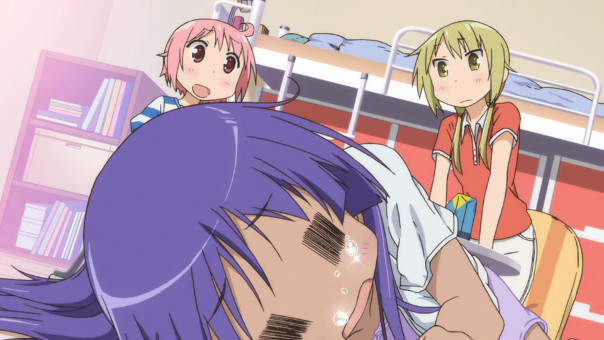
Well. I made another couple of episodes progress on Yuyushiki, so maybe I’lll have it done by the time Kizumonogatari comes out!
It’s weird, though – I was taking a look through the list of shows from the last year, and there’s not a whole lot there that social media is making me feel a little left out for not having kept up with. Part of me thinks it’s just that I made more of an effort to keep up with things that seemed worthwhile, but Sakura Trick kind of came and went. GochiUsa kind of came and went. HaNaYaMaTa (which is probably the one I should actually wrap up, for WUG reasons mostly) kind of came and went. It feels like these are shows which would have gotten a bit more of an ongoing discussion in previous years, but they don’t seem to have generated the continued appreciation (or at least name-dropping) that the likes of Kiniro Mosiac, Yuyushiki or Non Non Biyori did in previous years, and seemingly still do. I’m not sure if this is just me paying different levels of attention to different social media streams, or a change in the people using them, or just CuteGirlCuteThings shows having a faster churn rate this year.
Which is why the show I need to go back and watch more of is still Yuyushiki, because people still bug me about that one.
To follow up on last year, though, whilst I’ve kind of given up on Kiniro Mosiac following the sequel announcement, given that the only thing I’m particularly interested in seeing there is the last episodes Pirate Karen, I did manage to find the time to retrospectively go back and watch Non Non Biyori. It was fun. I guess I have a sequel to look forward to now.
Thinking back on it, though, maybe it’s just the staccato fashion in which I ended up watching it, but most of the things from Non Non that stuck with me are less gags or humorous situations, more the lightly more sedate (and largely Renge) moments, like Renge picking up a friend over the summer, or them climbing up the hill on New Years.
(Also, Encouragement of Climb is probably the thing that I should actually go back and watch based on the quiet, but relentlessly, positive, chatter, but the whole weird Crunchyroll situation surrounding it kills it’s chances a little for me. Also guess I just missed the first season, given it’s just been pulled there…)
The “That Was This Year?†Award for Show I Keep Thinking Was 2013 – Witch Craft Works
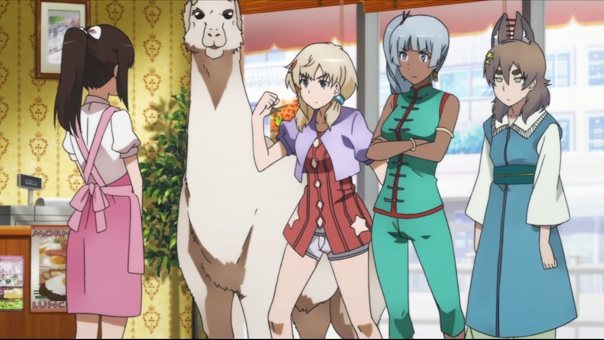
Tsutomu Mizushima has kind of been the secret MVP of TV anime these last couple of years. I mean, he’s always been a quietly solid director, someone who produces a lot of great shows but never really seemed to be in the spotlight himself. Well, until Girls und Panzer was airing this time last year, anyway. I suppose an original work will do that for your profile, or at least one which is actually good – there’s no original author to take most the credit, justifiably or otherwise.
Mizushima is back in the spotlight again right now as the director of current nerd favourite Shirobako, the show about how it’s a minor miracle that cartoon shows ever actually get made, at least to any degree of quality. Everyone should probably be watching Shirobako, but Mizushima’s other show from last year was Witch Craft Works.
One of the funny things about Witch Craft Works, though, is that there’s a lot about it that comes across as being Mizushima’s usual directorial flourishes, but actually do come straight from the original work. A lot of the little jokes, and even a bunch of the scene composition, whilst seemingly trademark Mizushima, were lifted straight from the manga. Like, I was surprised that Obama was in the original, in all this Yes We Can glory, or the KMM-dan sneaking off to Karaoke. As a work, it’s a pretty great match for his style.
Which isn’t to say that there isn’t a lot of Mizushima-flavour in there. Weird extended jokes about how family restaurants don’t count Llamas as pets, or the odd pun-led decision to have half the shows music sound like it came from an obscure Kraftwerk album, are new to the anime adaptation. The comedic timing is pretty impeccable as well, though you’d expect that out of Mizushima. It’s an extremely solid piece of work.
The other interesting thing about the show is the now all-too-well publicised fact that the shows protagonist, Takamiya Honoka, was, at some point during the development of the comic, intended to be a girl. Somewhat unsurprisingly, and not entirely unjustifiably, that rather led to quite a few reactions of “why can’t we have nice things”, although were I to be entirely honest, the distinct flavour it ended up given the series is an awful lot of what I find appealing about the shows early running.
It’s honestly a little hard to tell if the author actually made any alterations to their previous plans due to the characters gender switch. Honestly, if they’d left Honoka as a girl, it’d almost be a little too rote as a genre work – the shows heroine, Kagari Ayaka, is the school idol that all the other girls worship, so her paying attention to this otherwise plain and uninteresting classmate results in the usual gamut of annoyed glances and bullying. We’re only a outdoor-shoes-in-the-pool short of completing a trope-bingo card.
I’d like to give the author the benefit of the doubt and assume that this stuff was deliberately put back in, mainly because it’s all handled in a curiously well-considered fashion – there’s something about going through these usually dramatic familiar scenes with a guy in-place of a petite girl that makes them inherently hilarious without having to stress the point. I mean, they are played for gags anyway, but that they play more on the ridiculousness of the tropes for the joke, more than the fact that Honoka is a(n admittedly rather feminine looking) bloke, just makes it funnier.
There’s probably something smart to also say about the perceived reversal of gender rolls in the dynamic between the leads as a result of the switch. It’s not like series where it’s the heroine that does most of the heavy lifting during battle (at least initially) are exactly uncommon – there’s things like Shana or Kurokami or Kyoukai no Kanata out there, off the top of my head – but there’s a tendency to defang them somewhat by also making them adorable little girls. In Witchcraft Works, not only does Kagari cut a far more imposing figure than Honoka could ever dream of, but so does pretty much every other female character in the show other than Chronoire (and she not only has a dapper Crocodile familiar to counterbalance that, but being put against the rest of the shows cast with the figure she has just makes her straight-up unnerving)
(Also, yeah, yeah, using Kurokami as an example of anything in the year 2014)
(Also, Also, Witch Activity may have been magnificent, but I’ve been listening to Divine Intervention all year. Great song)
(Also, Also, Also, Izawa Shiori put on a pretty great turn as everyones favourite KMM-dan witch Tanpopo-chan)
The “Nowt More To Say†Award for Show I’ve Written About Too Much Already – Wake Up, Girls!
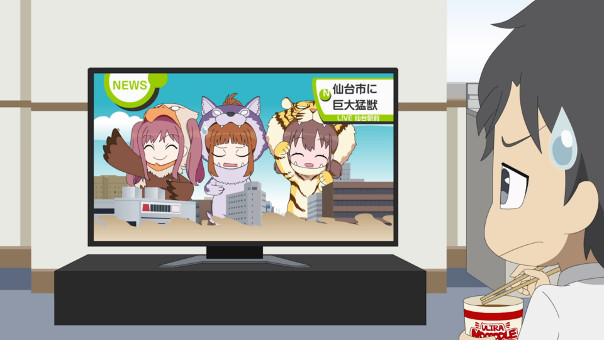
It’s IDOL CULTURE, the anime, except in a way that isn’t really entirely accurate in an exaggerated fashion and annoys people who’re actually into the real-life idol scene as a result. The movie is largely the best part – Little Challenger always slays me – even if it’s the one installment which didn’t get any touch-up for some of the really obvious animation issues for the BD release, but I like the show in general, and I’m looking forward to the new movie whenever its out this year. Dig out my other blog posts on the matter if you really want to know my thoughts, I guess.
(Also, Minyami best WUG)
The “Do People Still Actually Use The Term Gainax Ending?†Award for Seriously? WTF!? – Aldnoah.zero
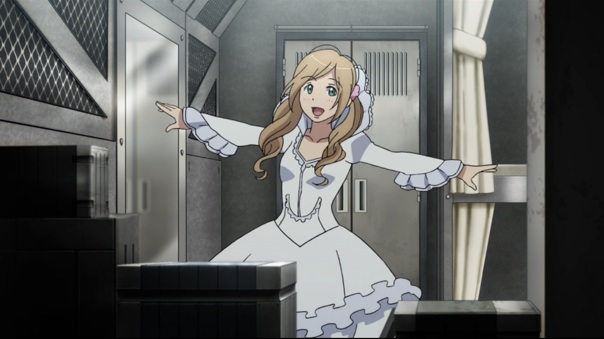
In many ways, it seems like it’s been a slightly quiet year for ol’ Gen the Butcher. To a certain degree, it’s probably just that he seemed to be all over everything the last couple of years following his success with Madoka, or at least all-over a number of the highest-profile shows (for the otaku market, anyway) – things like Fate/Zero and Gargantia and Psycho-Pass. Although maybe just over all the things that’d bring him to US conventions every other month. The last twelve months, however, with Psycho-Pass shuffled off to Ubukata, he’s probably kept himself rather busy with Kamen Rider Gaim.
Not that writing a Kamen Rider show is anything to be sniffed at, given it falls within the realm of Things Japanese People Actually Watch (unlike, say, most the things I write about here), but it’s not exactly the highest profile thing in the Western anime fandoms. On the other hand, Gen’s anime credits this year amount to Expelled from Paradise – a CG movie which has only just come out the last few weeks – and Aldnoah.zero, the robot show which, by most reports, he probably didn’t actually write all that much of the final product of. Not that the fact necessarily seemed entirely obvious, at least based on folks perception of his writing.
To be fair, Aldnoah plays something of a fake-out right from the first episode. It’s a robot show in which the Earth is on the precipice of resuming a war against the technologically vastly superior military of the returning Martian immigrants. When their adorable teenage princess, Asseylum Vers Allusia, decides to play peace envoy, she is subsequently assassinated in a very public fashion by a group of terrorists that was actually secretly arranged by a Martian noble.
Unsurprisingly, the Martian aristocracy, itching for a fight and unaware of the actual circumstances of her apparent death, take the bait and pretty much flatten most of the globe in a bout of righteous fury. Of course, I say “apparent†death because the twist is that Asseylum isn’t actually dead – it was one of her stand-ins that took the brunt of a shoulder-mounted missile launcher – but unable to contact her people thanks to the chaos following the invasion, she ends up in the care of one of the shows two male leads, Inaho, and his rag-tag group of former military student chums, as they try to regroup with the Earth military that still remains.
Aldnoah is one of those weird shows that I really enjoyed whilst in the process of watching it, but I’m somewhat less enamoured with in retrospect, and probably at least in part for the same reasons. I mean, I do like shows in which folks with crazy mental focus or attention-to-detail overcome seemingly insurmountable odds by thinking things through logically (even if Aldnoah has a terminal tendency to over-explain things afterwards), but even more-so I like shows with daft, unpredictable cliffhangers, and Aldnoah certainly had it’s share of those, but to a degree it fails to wrap up the several of biggest of these in fashions that feel entirely satisfactory, and distracts you from the fact in the short-term by waving something else shiny in your face.
Which is fine to a degree, I guess. The problem gets to be when you get to the back end of the (first cour of the) series, when there’s nothing following to distract you from what is happening. To roll back a few episodes beforehand for context, though, not content with having pretended to kill of Asseylum the once, they have our heroes other random pick-up, daughter-of-martian-terrorist (in short-shorts) Rayet, throttle the princess to death whilst she was taking a shower. Of course, rather than do the interesting thing of trying to follow-through on the ramifications of Asseylum having actually copped it, Inaho simply revives her using CPR. It’s in Inaho’s wheelhouse to do something like that, so it’s fine to a degree, I suppose, but there’s no real lasting implications coming from it other than Rayet feeling kind of bad about the whole thing. Asseylum doesn’t even seem to suffer any real short-term physical issues. It’s just a situation taken to an extreme for the sake of sensationalist drama.
In itself, it’s not too bad, though the fact that they were using the Princess dying for the second time as a hook isn’t exactly the best writing. The real issue is when you come to the shows finale. Inaho and Asseylum lead an assault against the castle of a Martian noble threatening to flatten the remainder of the Earths military, Asseylum being the only one who can deactivate the magical martian technology used to power their giant robots. Ei Aoki, accomplished director that he his, turns in an episode that is, moment to moment, exciting, eventful and well-paced, and it’s a blast to watch. Then, just as our heroes are successful in their endeavours, a series of unfortunate circumstances lead to the fellow who organised the princesses murder right back at the start of the series being able to suddenly shoot her dead. Again. Oh, and then Slaine, the other male lead, and Asseylums childhood friend (and also the butt of most of the shows misery) decides to murder Inaho point-blank because, well, they just plain don’t get along. Even though Inaho supposedly wasn’t even in his original drafts of the series, it’s the kind of sudden, blunt denouement you’d expect from something with The Butchers name against it.
At least, that’s what we assume happened, because the show had set the kind of precedent that, even though that is what we were shown on screen with some sense of finality to it, we couldn’t really be sure that was what actually happened. They’d already backed out of having killed of Asseylum twice, so what’s to say that she was actually going to stay dead again? What’s to say that even the blatantly fatal injuries that Inaho suffered were even final?
The 2014 conclusion to the Aldnoah finale hilarity was when the promotional material for the second cour started surfacing and, lo-and-behold, Asseylum is alive and well (if in a wheelchair). Maybe. Probably. I guess we can’t rule out someone using the same holographic technology Asseylum used to disguise herself to masquerade as her, but you know what, I kind of don’t have to faith in the show to be doing that.
But I’ll watch Aldnoah 2 anyway, because, hey, I bet it’ll have some real duuuuumb cliffhangers, and maybe it’ll be glorious. Maybe they’ll even retrospectively validate some of the events with a really killer twist that explains everything too, but, hey, the problem with these shows they split in half is that I’ll quite happily judge the things early.
(Also, Sawano’s music totally made most of this show. It’s been a good year for Sawano OSTs, which allows me to mention here how much I enjoyed Kill la Kill throughout, despite not finding myself able to write anything about it)
(Also Also, that isn’t Asseylum in that screencap above, but rather me ruining the shows one good joke)
(Also Also Also, I really like Rayet as a character, but I feel she was a little wasted in the first series, made worse by the resolution to the Princess-throttling. I hope they find a good use for her in the second cour)
The “LRIG is GIRL backwards†Award for Most ANIMATION show – Ping Pong The Animation

As I’m sure you remember, back in the mists of the space-year 2005, when Fuji TV first launched their Noitamina programming block, the intention behind it was, ostensibly, to produce shows that would have some kind of interest beyond the usual late-night anime audience. This isn’t to say that the shows produced weren’t also being made with some of the usual ulterior motives of promoting book sales or a live-action movie or some other product, but there was a focus on shows which were at least somewhat different from the norm.
Over the years, this has gotten to be rather less true, as the block as been home to the likes of Black Rock Shooter, Guilty Crown and Galilei Donna, shows which aren’t exactly adhering to the blocks original intended audience. Occasionally, however, the block will still either get really weird with something you really wouldn’t expect to go that way (like how Samurai Flamenco ended up panning out), or will simply get really weird.
The actual existence of Ping Pong is weird in itself. Whilst a long-time Noitamina stalwart, director Misaki Yuasa was something of a director at a loose end until he made a success out of KickHeart. Ping Pong as a property is not only the best part of two decades old at this point, long beyond the need for additional promotion, but was also already adapted into a largely very well-regarded live action movie in the interim period (certainly, I was already a big fan of that adaptation myself). There was no obvious business point in making a Ping Pong cartoon in 2014, but they made a Ping Pong cartoon in 2014.
Which is why it’s the most Noitamina show to have been made in quite some time.
I like Yuasa’s Ping Pong an awful lot for a variety of reasons. Some of those very much have some basis in the original work – I adore the fact, particularly given some of the climate in Japan (and the UK, for that matter), that the most interesting, relatable and, by the time we get to the end of the show, sympathetic character in the show is arguably the Chinese immigrant Wenge. I love the fact that a whole lot of everything goes badly for people, with actual consequences, for something like Ping Pong, which many of the characters will even admit is kind of dumb. These are some of the same reasons why the live action version, even with it’s own directorial verve and its baller soundtrack, was such a strong movie itself.
There’s a lot that’s specific about this adaptation that’s great too, though. The fact that it was a long time in coming is a little indicative of some of the scheduling problems apparent in the shows animation, but Shinya Ohira’s opening animation for the show, with it’s mixture of stark black-and-white animation (harking back to something like the late-90s/early-00s GIF animation movement) and usual watercolour cuts, is pretty striking. Whilst there’s certainly parts of the show that look cheap because of it, and it results in a show that actually requires attention to be paid to it, the use of split-screen and manga-style panel cut-ins is frequently used to rather effectively convey things that at important, but don’t really warrant spending a lot of the shows actual run time on, in a compressed form. Whilst it’s perhaps also what makes the show off-putting to many, the fact is that it’s so unusual in it’s overall aesthetic compared to other anime (if not necessarily compared to, say, European cartoons, even if many of those are looking increasingly Japanese) makes it somewhat a worthwhile experience.
But, ultimately, what makes it interesting is that it’s Yuasa making a show that is actually accessible – it’s something that’s definitely Yuasa, but isn’t anywhere near as inscrutable as something like The Tatami Galaxy or Kaiba, and that’s certainly worth something. Sure, there’s a lot going on for what is essentially a short sports anime, but it’s not like basic reading speed is a hurdle like it was in Tatami Galaxy.
(Also, I guess Yuasa’s Space Dandy episode was pretty good (though my favourite was probably the DropKix one, because that song sure was catchy), but I suppose that Adventure Time episode he did was probably the secret most-accessibly Yuasa thing this year)
The “I Promise This Is The End†Award for Show I Seemed To Like More Than Others – Nanana’s Buried Treasures
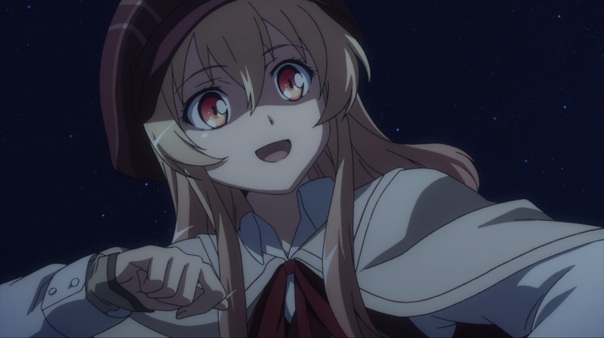
Speaking of Noitamina, I suppose Pudding Ghost is on the other end of the Noitamina scale, based on a light-novel and featuring cute girls-a-plenty (and a well-tanned otokonoko maid, if that’s your thing). Classic Noitamina it is not.
Though, in a sense, it rubs the fact that it’s another Light Novel adaptation in your face right from the start, by throwing at you what may well have been a rather more interesting show, with the titular Nanana going after one of the titular Buried Treasures in rather breakneck Indiana Jones fashion. Its one of those things where I wonder what form, if any, it actually took in the original novel – I’m kind of presuming it was literally just a single page of setting monologue describing none of what we actually see on screen.
As the actual show starts, we meet our hero, Juugo, as he arrives at the island on which the school he is going to attend is set. Unfortunately for him, it turns out that the bargain-priced room that he managed to land is haunted by the founder of the entire island city, the aforementioned Nanana – she was murdered there a few years back, and seemingly can’t move on due to not having the slightest idea who actually killed her.
She also eats nothing but pudding, because apparently ghosts eat in this universe. I have to say, the merchandise for the show that proudly proclaims “NO PUDDING NO LIFE†seems to be missing the fact that she is, in fact, no longer technically living. NO PUDDING NO AFTERLIFE isn’t really as catchy, though, I guess.
Anyway, whilst she may be dead, and constrained to a single room (where she does little but play Terraria, Virtua Fighter and PSO, and I think I saw Splunky at one point?), she’d arranged for the set of items collectively known as the Nanana Collection – supernatural peculiarities she’d picked up during her treasure hunting days – to be hidden across the island in a series of elaborate puzzle rooms. Being Nanana’s latest roommate, Juugo is obviously promptly recruited by the school club which hunts down the Nanana Collection because, well, reasons and stuff.
Whilst the first step forward may impress somewhat, the second one, once the show reveals what it’s actually about, is somewhat less impressive. It’s not probably not what you expect from the block, but that first episode is full of male gaze out the wazoo. Heck, our hero is even willing sacrifice his shoulder in order to cop a feel of ghost boob. This isn’t to say that there isn’t service in the other direction at all, at least as the series progresses – there’s some muscular man flesh on display later too – but it’s not exactly equal opportunity in that regard.
Infact, whilst the writing is only occasionally infuriatingly Light Novel Dumb, the only particularly vaguely interestingly smart thing the show throws out is the conclusion to the shows first story arc, in which it reveals that the show has not been entirely honest about what Juugo’s role has been in the events portrayed, although I kind of like the fact that it’s the shows best girl, self-proclaimed genius detective Tensai, that actually calls him out on it. It’s nothing that isn’t obvious in hindsight, and it obviously explicitly colours how you perceive everything going forward from that point as it’s not really repeatable (and it feels like it goes out of it’s way to ensure you bear it in mind), but it is at least there. All the clues are in plain sight, and unlike, say, HAL, it’s one of those things where it’s been fair enough in what is was doing in that you can go back and see all of the what-should-have-been-obvious things it threw at you. It paints Juugo as being slightly more than just a stereotypical pervy male lead, if only slightly.
It’s also kind of nice, at least in this portion they’ve adapted, that not every female character is salivating over Juugo, I guess.
That being said, I say “portion they’ve adapted†for a reason. I mean, this isn’t the greatest show that’s ever been made or anything, but it’s at least a consistent one that was fun without doing anything too offensive, but it also one of those shows that doesn’t resolve anything in a “Now Buy the Novels!†sense. Whilst I realise that advertising the original work is half the reason things get made into anime, the lack of closure is (again) not really what you’d expect out of a Noitamina, and, honestly, I’m not really about to recommend someone watches a show which kinda drops something huge as a teaser right after the end-credits of the final episode. It’s fine if you read Japanese, one would have to suppose, but otherwise, it’s just mean.
(Also, I was going to say Zvezda, but that seems to have gotten at least a little more traction. Also, the recent OAV was an idol episode)
(Also also, on the Noitamina-tip, I really can’t figure out if I’m looking forward to Punchline – It’s hard to tell if that show is going to be what it looks like on it’s surface or not…)
